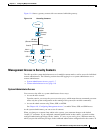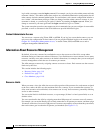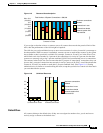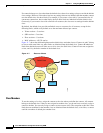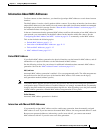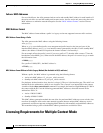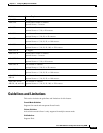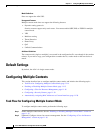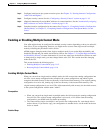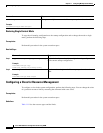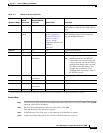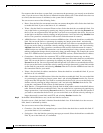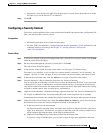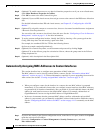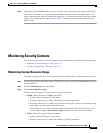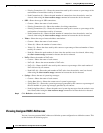
11-15
Cisco ASA 5500 Series Configuration Guide using ASDM
Chapter 11 Configuring Multiple Context Mode
Configuring Multiple Contexts
Step 3 Configure interfaces in the system execution space. See Chapter 12, “Starting Interface Configuration
(ASA 5510 and Higher).”
Step 4 Configure security contexts. See the “Configuring a Security Context” section on page 11-19.
Step 5 (Optional) Automatically assign MAC addresses to context interfaces. See the “Automatically Assigning
MAC Addresses to Context Interfaces” section on page 11-20.
Step 6 Complete interface configuration in the context. See Chapter 14, “Completing Interface Configuration
(Routed Mode),” or Chapter 15, “Completing Interface Configuration (Transparent Mode, 8.4 and
Later).”
Enabling or Disabling Multiple Context Mode
Your ASA might already be configured for multiple security contexts depending on how you ordered it
from Cisco. If you are upgrading, however, you might need to convert from single mode to multiple
mode by following the procedures in this section.
ASDM supports changing modes from single to multiple mode if you use the High Availability and
Scalability Wizard and you enable Active/Active failover. See Chapter 7, “Using the High Availability
and Scalability Wizard,” for more information. If you do not want to use Active/Active failover or want
to change back to single mode, you must change modes at the CLI. This section describes changing
modes at the CLI.
This section includes the following topics:
• Enabling Multiple Context Mode, page 11-15
• Restoring Single Context Mode, page 11-16
Enabling Multiple Context Mode
When you convert from single mode to multiple mode, the ASA converts the running configuration into
two files: a new startup configuration that comprises the system configuration, and admin.cfg that
comprises the admin context (in the root directory of the internal flash memory). The original running
configuration is saved as old_running.cfg (in the root directory of the internal flash memory). The
original startup configuration is not saved. The ASA automatically adds an entry for the admin context
to the system configuration with the name “admin.”
Prerequisites
• When you convert from single mode to multiple mode, the ASA converts the running configuration
into two files. The original startup configuration is not saved, so if it differs from the running
configuration, you should back it up before proceeding.
• The context mode (single or multiple) is not stored in the configuration file, even though it does
endure reboots. If you need to copy your configuration to another device, set the mode on the new
device to match.
Detailed Steps



